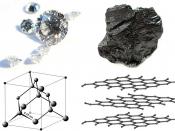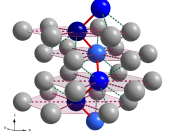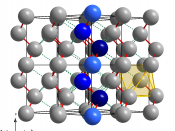Chapter 6: The Chemistry of Life
Ch. 6.1 Atoms & Their Interactions
Both living and nonliving things are composed of the same basic building blocks called atoms.
Elements
Element- a substance that can't be broken down into simpler chemical substances.
On Earth, 90 elements occur naturally
Natural elements in living things-
Only about 25 of 90 elements are essential to living organisms. Each element is identified by a one or two letter abbreviation ex: C - carbon
Trace elements-
Exist in very small amounts but are essential
Atoms: The building blocks of Elements
Elements are made up of atoms
Atoms- the smallest particle of an element that has the characteristics of that element
The structure of an atom-
Each element has distinct characteristics
Nucleus- center of atom made of positively charged particles (protons) and particles with no charge (neutrons)
Electron cloud- small particles with negative charge spin at high speed around the nucleus
Electron energy levels-
Each energy level has a limited capacity: first holds 2 e-, second holds 8 e-, and third holds 18 e-
Isotopes of an Element-
Isotopes- atoms of the same element that have different numbers of neutrons
ex: Carbon- 12, Carbon- 13, and Carbon- 14
Isotope nuclei are unstable and break apart releasing energy as they do
Compounds & Bonding-
Water is not an element, it is a compound
Compound- a substance that is composed of atoms of two or more different elements that are chemically combined
Characteristics of a compound are different than those of the individual elements
How covalent bonds form-
Most matter is in the form of compounds
Most elements are stable when their outer energy levels are full, one way to fill the outer shell is to share electrons
Most compounds in organisms have covalent bonds
Covalent bonds- the force...


